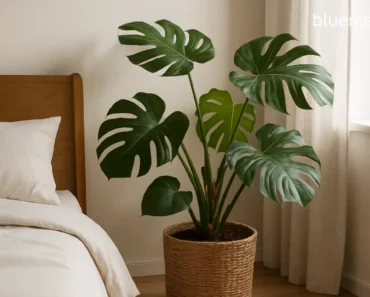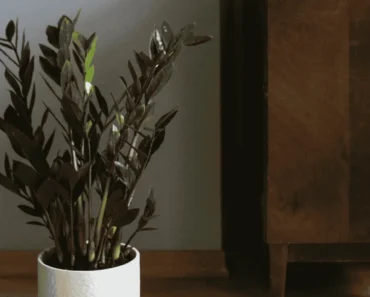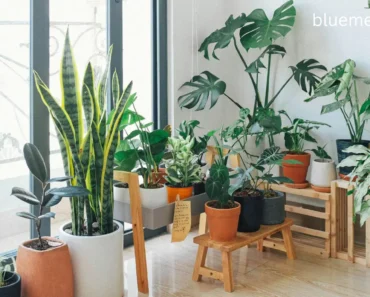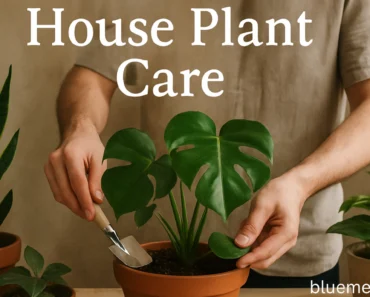Key Takeaways:
- Timing matters: Late winter/early spring is your golden window for most plants
- Less is more: Never remove more than 1/3 of your plant at once
- Clean tools save lives: Your kitchen scissors might harbor yesterday’s germs
- Some plants are off-limits: Palms and Norfolk pines will never forgive you
- Deadheading is magic: Remove spent flowers to encourage more blooms
Let me guess – you’re standing there with scissors in hand, staring at your beloved fiddle leaf fig (or snake plant, or monstera), completely paralyzed by the fear that one wrong cut will send your green baby into plant heaven. I’ve been there. We’ve all been there.
I used to think pruning was some mysterious skill reserved for experts. My first try left my pothos nearly bald, and I checked it anxiously for weeks. Spoiler: it thrived, rewarding me with lush new growth.
Here’s what I wish someone had told me back then: your plants want to be pruned. They’re practically begging for it. That leggy growth? Those yellowing leaves? Your plant is sending you signals, and it’s time we learned to listen.
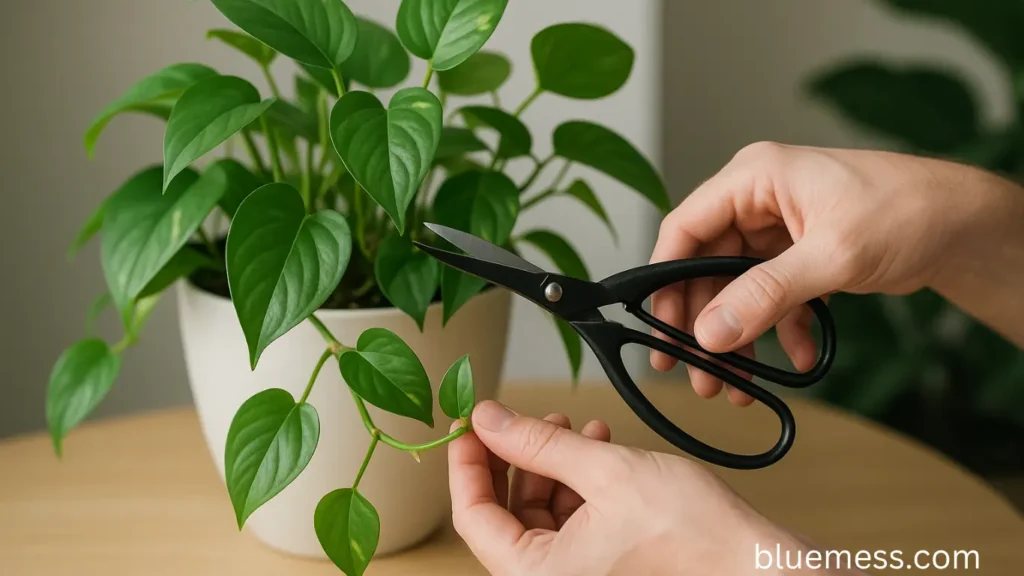
Why Your Plants Are Secretly Hoping You’ll Get Out the Scissors
In nature, plants are pruned naturally—wind breaks branches, animals nibble, storms take their toll. Indoor plants miss out on this, so pampering can mean neglecting natural upkeep.
Neglect pruning and your plants look overgrown and unbalanced. Some collapse under their own weight; others stretch awkwardly, all stem and little charm.
But here’s the beautiful part: when you prune thoughtfully, you’re not just removing unwanted growth. You’re redirecting your plant’s energy toward the parts you want to flourish. It’s like being a plant life coach.
Timing is Everything (And Why Your Plant’s Internal Clock Matters)
I once believed you could prune anytime—wrong. Plants have schedules, and ignoring them is like waking someone mid-sleep.
The sweet spot? Late winter to early spring. This is when most houseplants are just starting to wake up from their winter nap and getting ready for their growing season. They’re practically vibrating with energy, ready to push out new growth wherever you make your cuts.
Now, flowering plants are a bit different – they’re the divas of the plant world. For these beauties, wait until they’ve finished their show. Pruning right before blooming is like canceling opening night at the theater. Your plant has been preparing for months, so let it have its moment.
That said, there are always exceptions (aren’t there always?). If you spot dead, diseased, or damaged parts, don’t wait for the “perfect” season. Think of it as plant first aid – sometimes urgent care can’t wait for ideal timing.
Your Pruning Toolkit (AKA Why Kitchen Scissors Won’t Cut It)
Let’s talk tools, because this is where I see so many plant parents go wrong. I used to grab whatever was closest – kitchen shears, craft scissors, sometimes even my fingernails (don’t judge). Then I wondered why my plants kept getting weird infections and looking raggedy after my “help.”
Here’s your actual shopping list:
Pruning shears – These are your workhorses for anything thicker than a pencil. Get a good pair; your plants will thank you with clean cuts that heal quickly.
Kitchen scissors or small snips – Perfect for delicate stems and leaves. Just make sure they’re dedicated plant scissors, not the ones you used to open that questionable package last week.
Gardening gloves (optional but smart) – Some plants have sap that can irritate your skin. Plus, gloves make you feel more professional, which never hurts.
Always clean your tools first—a quick wipe with rubbing alcohol can prevent costly plant infections.
The Art of Plant Psychology (Yes, That’s a Thing)
Before you make a single cut, you need to have a heart-to-heart with your plant. Not literally (though I won’t judge if you do), but you need to really look at what’s going on.
Step back and observe: Is your plant lopsided, reaching for sun, or sporting dead stems and leaves?
Here’s what I look for during my plant inspection:
The obviously dead stuff – Brown, crispy, or mushy parts need to go. No negotiation.
The “almost dead” situations – Yellow leaves that are clearly on their way out. Cutting them off lets your plant redirect energy to the healthy parts.
The growth hogs – Stems that steal all the light and leave others looking sad.
The runaways – Long, leggy stems making a break for the window.
And here’s a secret: look for those little bumps where leaves meet stems. Those are “latent buds” – basically your plant’s backup plan. When you cut just above these spots, you’re giving your plant a roadmap for where to grow next.
Making the Cut (Without Having a Mental Breakdown)
Take a deep breath. It’s time to cut. Even now, my heart still races a bit.
Start with the easy stuff – anything that’s obviously dead or dying. Think of this as plant triage. These leaves and stems are already goners; you’re just making it official. Clip them off as close to the main stem as possible, but don’t go crazy trying to get every last bit.
For the more substantial cuts – the ones that actually shape your plant – here’s my foolproof method:
Cut just above a leaf node or bud. This gives your plant a clear message about where to focus its next growth spurt. It’s like leaving breadcrumbs for new stems to follow.
Make clean, angled cuts. No crushing, no tearing, no “just a little more” sawing motions. One confident snip is better than three hesitant ones.
Step back often. It’s easy to get carried away and over-prune. Take breaks, reassess, and remember: you can always cut more, but you can’t reattach leaves.
Follow the 1/3 rule religiously. Never, ever remove more than one-third of your plant in a single session. This isn’t just a suggestion; it’s plant law. Break it, and you might send your green friend into shock.
The Magic of Deadheading (Your Flowering Plants Will Love You)
If you have flowering houseplants, let me introduce you to deadheading – the most satisfying plant care activity you’ve probably never heard of. It’s exactly what it sounds like, and yes, it’s a bit morbid, but stick with me.
When your plant finishes blooming, those spent flowers aren’t just sitting there looking sad – they’re actually draining energy from your plant. Your poor plant is trying to make seeds from those dead flowers instead of focusing on making new ones.
Deadheading is simple: pinch or clip off the spent flowers as close to the main stem as possible. It’s like telling your plant, “Hey, forget about those old flowers, let’s make some new ones!” And most plants are surprisingly eager to take that advice.
I learned this lesson the hard way with my African violets. For months, I let the old flowers just hang out, wondering why I was only getting a few blooms at a time. Once I started deadheading regularly, it was like my plants discovered flower steroids – blooms everywhere!
When Vines Take Over Your Life (And Your Living Room)
Let’s talk about the beautiful monsters we call vining plants. Pothos, philodendrons, ivy – they start so innocent and small, and then one day you wake up and they’ve basically redecorated your entire room without your permission.
Pruning vines requires a slightly different strategy because these plants are basically the overachievers of the houseplant world. They’ll grow and grow until they take over everything, and unlike other plants, they actually respond well to pretty aggressive pruning.
Here’s my vine-wrangling approach: embrace the major haircut. Don’t be afraid to cut them back substantially in spring or summer – they’ll bounce back stronger than ever. I once cut my pothos back by about 60% (I know, I know, way more than the 1/3 rule), and within two months it was fuller and more gorgeous than it had ever been.
The key with vines is to cut just above a node (those little bumps on the stem), and don’t be shy about it. These plants are basically asking you to keep them in check.
The No-Touch List (Plants That Will Hold Grudges)
Now, here’s where I need to be your voice of reason. Not all plants appreciate the pruning treatment, and some will literally never forgive you if you cut them wrong.
Palms are the biggest drama queens of the plant world. They grow from a single growing point at the top, and if you damage that, game over. Same goes for Norfolk Island pines – they look like they need trimming, but trust me, they don’t want your help.
These plants have what’s called a “terminal dominant bud,” which is basically their master control center. Cut it off, and you’ve just performed plant surgery without a license. Not good.
For these types of plants, limit yourself to removing completely dead fronds or branches, and only cut them back to where they meet the main stem. Think of yourself as a plant janitor, not a plant stylist.
What Happens After the Cut (The Healing Process)
Okay, so you’ve made your cuts, your plant looks a bit naked, and you’re probably feeling like you’ve just sent your child off to their first day of school. What now?
Don’t panic if your plant looks shocked; some drop leaves for drama. It’s normal and temporary—a brief protest before bouncing back.
Make sure those cut areas stay dry for the first few days. Wet wounds on plants are like wet wounds on people – they’re asking for trouble. Hold off on watering until the soil is definitely dry, and don’t mist anywhere near those fresh cuts.
Within a few weeks, you should start seeing new growth emerging from those strategic cuts you made. It’s honestly one of the most satisfying things in the world – like getting a thank-you note from your plant.
Common Mistakes That Keep Me Up at Night
Let me share some of the pruning disasters I’ve witnessed (and occasionally caused) over the years, so you can learn from our collective pain:
The “Little Bit More” Trap: You start with good intentions, removing just the dead stuff, but then you see one more imperfect leaf, and another, and suddenly your plant looks like it survived a tornado. Set limits before you start, and stick to them.
The Dirty Tool Disaster: Using unclean tools is like performing surgery with dirty instruments. I’ve seen perfectly healthy plants develop infections because someone couldn’t be bothered to wipe down their shears.
The Wrong Season Syndrome: Pruning in late fall or winter (except for emergencies) is like asking your plant to run a marathon when it’s trying to hibernate. Bad timing can stress your plant unnecessarily.
The Pinch-and-Pray Method: Using your fingernails or trying to tear leaves off might seem gentler, but it actually creates ragged wounds that are harder for your plant to heal. Clean cuts win every time.
Your Plant’s Recovery Plan (Post-Pruning Care)
Once you’ve finished your pruning session, your plant needs a little extra TLC while it recovers. Think of it as plant physical therapy.
Light, but not too much: Your newly pruned plant is sensitive, so let it stay in its usual home. Consistency is key for recovery.
Water wisely: Don’t overwater out of guilt. Your plant actually needs less water now that it has fewer leaves to support. Stick to your normal watering schedule.
Hold off on fertilizer: This isn’t the time to push growth with extra nutrients. Let your plant settle in for a few weeks before resuming any feeding schedule.
Be patient: New growth takes time, especially if you pruned during the slower seasons. Don’t assume you’ve killed your plant if you don’t see immediate results.
The Confidence That Comes with Practice
Plant pruning gets easier with practice. At first, every cut is nerve-wracking, but over time, you’ll learn what your plants need and when.
One day, a friend’s ‘dying’ rubber plant just needed pruning. After a quick trim, it looked healthier right away.
Start small, be gentle with yourself when you make mistakes (and you will), and remember that plants are incredibly forgiving. They want to grow and thrive just as much as you want them to.
Your Next Steps (Because Knowledge Without Action is Just Trivia)
So here’s my challenge for you: pick one plant this week that clearly needs some attention. Maybe it’s that pothos that’s trying to redecorate your bookshelf, or the peace lily with the sad brown leaves that you’ve been pretending not to notice.
Start simple – remove the obviously dead stuff first. Get comfortable with making those easy cuts before you move on to the more dramatic reshaping. And please, for the love of all things green, clean your tools first.
Take a ‘before’ photo—you’ll appreciate the results. Seeing the change after pruning is genuinely rewarding.
Remember, you’re not performing plant surgery here – you’re having a conversation with a living thing that wants to be its best self. You’re just helping it get there.
Ready to give your green friends the haircut they’ve been waiting for? I’d love to hear about your pruning adventures – the successes, the “oops” moments, and everything in between. Drop a comment below and tell me: what’s your biggest fear about pruning your plants? Let’s troubleshoot together, because we’re all just figuring this out as we go, and honestly, that’s half the fun.
And if you end up with some beautiful new growth in a few weeks, don’t forget to share those victory photos – there’s nothing quite like the pride of a plant parent who helped their green baby thrive.
Table of Contents
Author
George Wine is a seasoned gardening expert with over 20 years of experience in the field of horticulture. His passion for plants and nature has driven his career, where he has honed his skills in various aspects of gardening, from landscape design to plant care. George holds a Master of Science in Horticulture from the University of California, Davis (UC Davis), a prestigious institution known for its research and advancements in plant science.
Throughout his career, George has worked with a diverse range of clients, offering tailored solutions to enhance outdoor spaces and create thriving gardens. His knowledge and expertise allow him to provide invaluable advice, ensuring that both novice and experienced gardeners achieve their gardening goals. Whether you’re looking for tips on sustainable gardening practices, innovative design ideas, or advice on specific plant species, George is here to help you cultivate the garden of your dreams.

